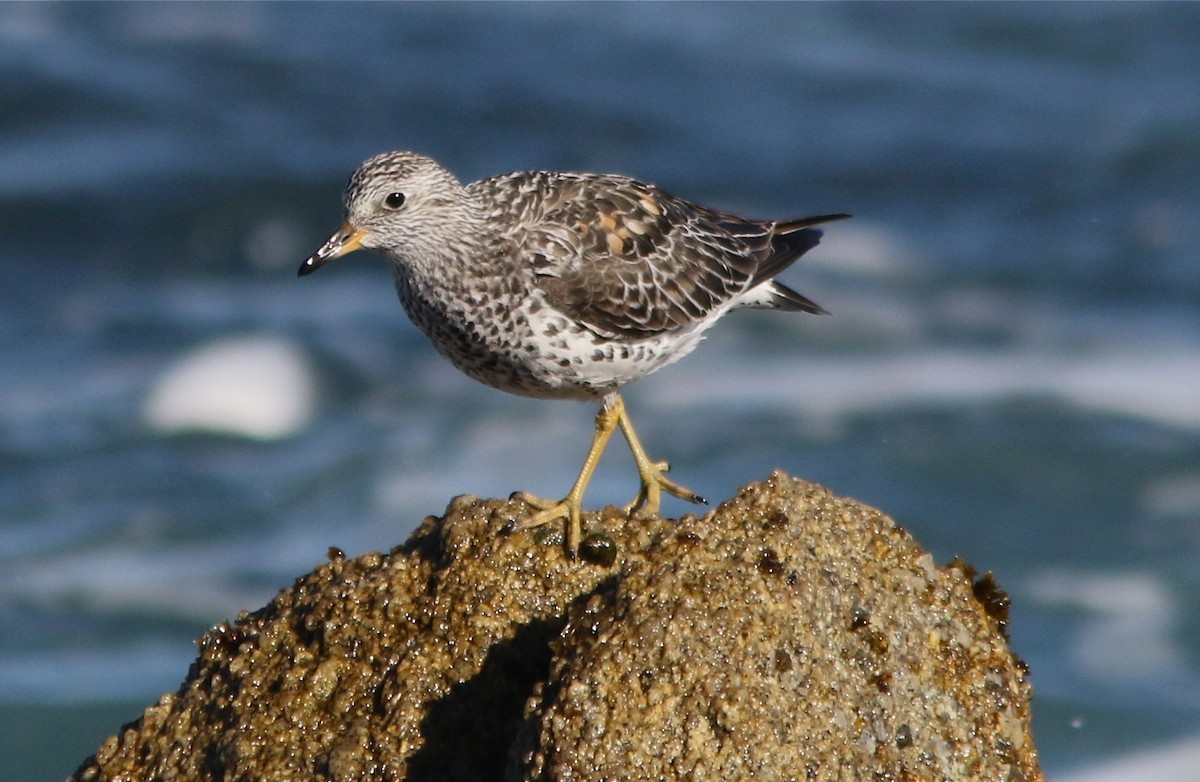Surfbird
A species of Aphriza Scientific name : Calidris virgata Genus : Aphriza
Surfbird, A species of Aphriza
Botanical name: Calidris virgata
Genus: Aphriza
Content
Description General Info
 Photo By Don Roberson
Photo By Don Roberson Description
The surfbird is a large sandpiper, reminiscent of the turnstones or the great knot. It measures 23 to 26 cm (9.1–10.2 in) and weighs 133–251 g (4.7–8.9 oz). The sexes look the same, but the females are slightly larger than males on average. Surfbirds their breeding plumage from March through August, and have white heads, necks breast and belly which are streaked with black, except for the crown which are rusty. The streaking becomes less prominent lower in the body. 
Size
23 - 41 cm
Nest Placement
Ground
Feeding Habits
The diet of breeding surfbirds is dominated by insects. On one study examining stomach contents, flies (Diptera), including eggs, pupae and adults, composed 55% of the food taken by surfbirds, and beetles Coleoptera 36%. Other insects taken include moths and butterflies (Lepidoptera) and bees and wasps (Hymenoptera). Seeds and snails are also taken, albeit rarely. 
Dite type
Aquatic invertebrate eater
General Info
Distribution Area
The surfbird has the longest and narrowest non-breeding distribution of any North American bird, being found from Kodiak Island in Alaska to the Straits of Magellan at the southern tip of South America. Along that range it is rarely found more than a few meters from the shore. During the breeding season it is found on the mountains of Alaska and the western Yukon, from 150–1,800 m (490–5,910 ft). The surfbird starts leaving its breeding grounds from July (the last leaving in October), and begins reaching its main wintering grounds in Chile and Peru in mid August. On its return migration it begins to leave South America in early March. Some birds remain on the wintering grounds year-round. Vagrant birds have been seen in the Falkland Islands, Florida, and Texas. The migration routes are almost entirely coastal, a very small number of birds have been seen inland during migration. Its breeding habitat is alpine tundra, preferably rocky ridges dominated by scree, rock fields, lichens, dwarf shrubs and Dryas (mountain avens), and less commonly in tundra with mosses and sedges. It is generally found away from suitable habitat that is close to forest. In the non breeding season, it is a rocky shore specialist, feeding on rocky shores, reefs, and ledges on the coast. It will feed from the spray zone on the water's edge to just above the tide line. In some circumstances, it will feed on sandy beaches and mudflats near rocky areas. 

 Photo By Don Roberson
Photo By Don Roberson